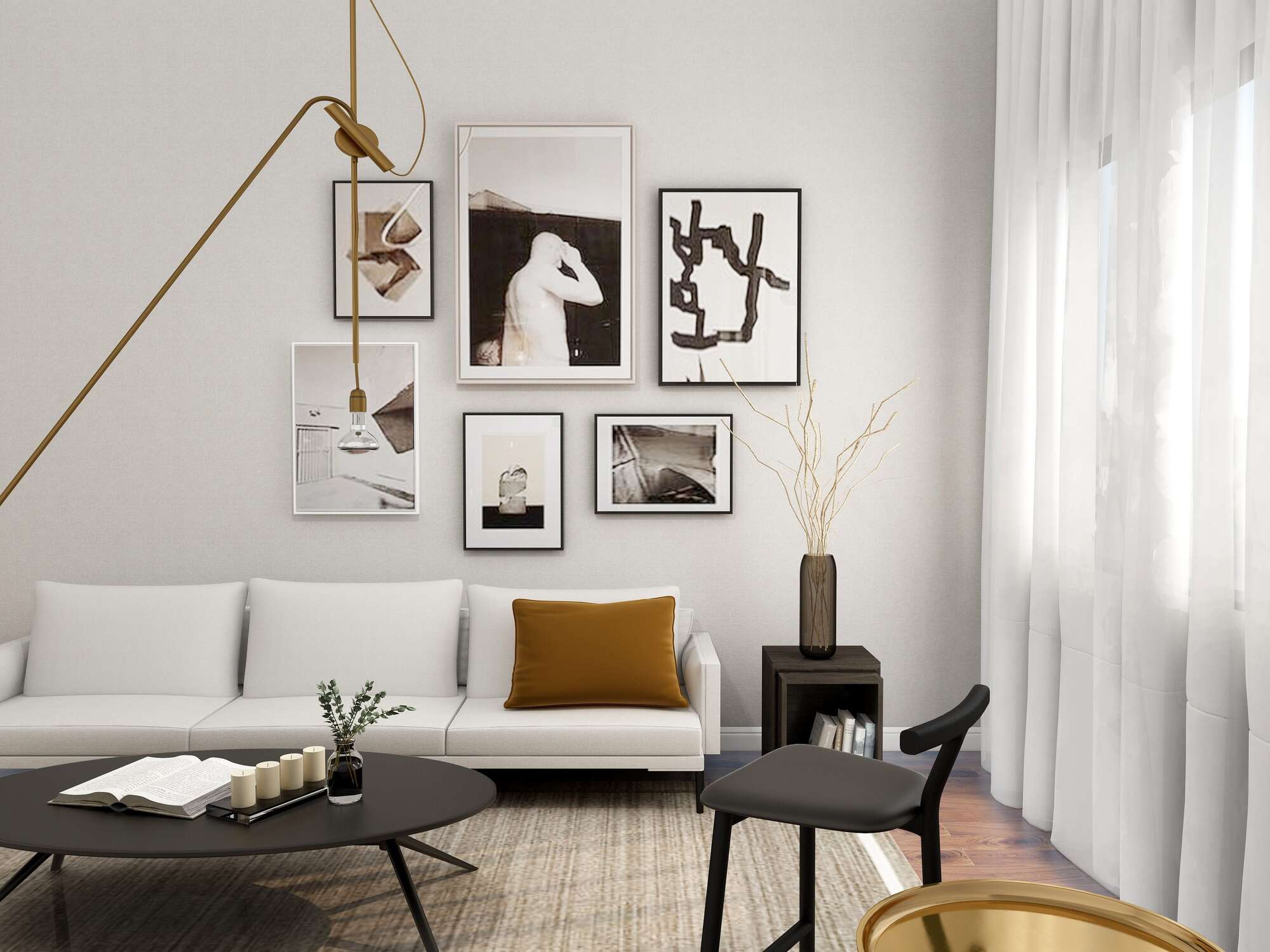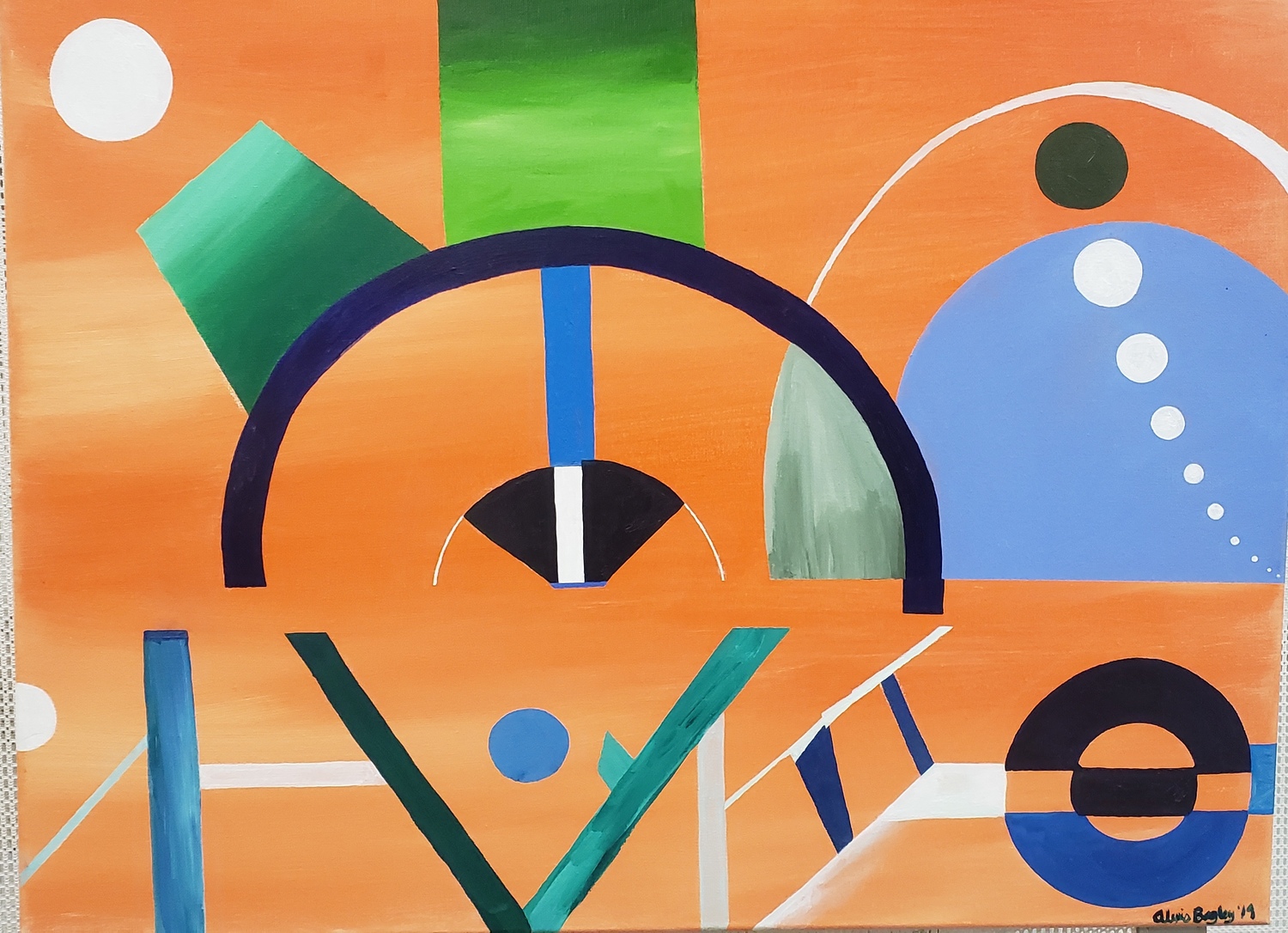A recent blog post by Teresa Siqueira of Porch featured advice from many art and framing experts, including Davidson Galleries, on the topic of collecting art for the home. Read the article below for helpful advice from us and others.

A gallery wall at home filled with beautiful artwork can make an empty room have warmth, color, and personality. There are many ways you can prepare your home art gallery to create a beautiful space you, your family, and guests will love. This guide from experts will show you some helpful tips on designing and preparing the best gallery at home. Read on to discover how to prepare your space and fill it with a range of artwork that is meaningful to you.
What are the key considerations for showing your art in the proper way?“There are two key considerations when it comes to displaying art to its best advantage: placement and lighting. You want to place art in a space that will accommodate it, leaving space around the art so it doesn’t feel crowded. Ideally, the art will be displayed at about eye level. We typically hang art so that the center-line of the art is 60″ above the floor. but this height can be modified based on personal preference. Lighting is critical. We recommend a warm or neutral LED spotlight shining on the art from above, at least 36 inches back from the art, and far enough above to allow the entire image to be illuminated evenly by the light.”
Tips to Start Collecting Art on a Budget“Follow/subscribe to your favorite artists, as many of them have studio sales or flash sales and sell their work directly, even if they also have gallery representation. Art prices are generally not negotiable – however you can always inquire about payment over time, and I’ve seen some artists offer sliding scale prices on their work or discounts for purchasing multiple pieces. If prices are “on request,” it doesn’t necessarily mean that they are expensive, so go ahead and ask if you are interested. Certain factors can result in more affordable art, such as the medium (a work on paper that has an edition of multiples might be more affordable than a painting), whether the artist is emerging vs. more established, the scale of the piece, etc. Shop around and look for art in lots of places! You can find affordable pieces online, in galleries, in cafés, and even in a flea market.”
Advice for proper illumination of artwork at home“A combination of natural, ambient, and focused light provides beautiful illumination of your artwork at every time of day. LEDs are ideal for artwork lighting since they last longer than other light sources and don’t emit infrared rays, UV rays, or heat. The heat produced by halogen and incandescent bulbs can damage art over time. Unless you’re highlighting a vignette with portable lamps, the best artwork lighting is as invisible as possible to allow the art to shine.”
What are the essential factors to consider when shipping artwork?“According to the art logistics experts at Fine Art Shippers, proper packaging with the use of high-quality art packing materials is the most important factor when shipping artwork nationally or internationally. Each piece should be professionally packed, and in many cases created in wood, to arrive at the destination in perfect condition. Another important factor is the experience of the company that is entrusted to ship art. It should be a reputable art logistics service provider able to handle art the way it deserves.”
How to choose the right piece of art for your living room?“When choosing the right art piece for your living room, a few things to keep in mind are size, color scheme, and style. What kind of wall space are you working with? Whether it’s one statement piece or multiple pieces, making sure your art decor is the right size will help ensure it’s a perfect fit. Incorporating artwork with tones that complement the color scheme of your space is also key to creating a cohesive and blended design. Lastly, consider your design style and the style of wall art you want to hang to complete your living room, and of course, make sure it is a piece that you love!”
How to choose the right size wall art?“Although there is actually no right or wrong, and it ultimately comes down to personal taste, the main consideration for choosing the right size for wall art will be space available where to place the artwork. You can put a large artwork on a small wall and a small artwork on a large wall and it will look great – this may depend on the actual artwork. What really makes an artwork look effective on a wall is having sufficient space around it so that the artwork can ‘breathe’ and that the artwork balances with any nearby objects such as chairs, drawers, plants, and lighting.”
How to match furniture to the art in your home gallery?“The best way to match furniture to your home’s artwork is by choosing a neutral tone in the artwork and purchasing furniture in that neutral shade. This way your artwork will be the centerpiece of your room and won’t be competing with your furniture. Always think about what you want to catch someone’s attention when they walk into a room. If you have a bold-colored sofa and a bold painting, it will be too confusing and busy. Always let one piece of decor do the talking!”
What are the essential factors people should know about NFT Art?“NFTs are similar to a certificate of authenticity, but digital and recorded on the blockchain. The problem with digital art is that it can be infinitely copied and you never know who the owner is. That’s why people were hesitant to buy digital art. NFTs solve this: They allow you to distinguish a copy from the original. And they prove, through the blockchain ledger, that you own it.”
Tips on budgeting for buying fine art“Much like budgeting for any other substantial purchase, take a look at your finances and determine how much per month you can set aside towards a fine art fund. It doesn’t have to be much, even an extra $100 a month would give you $1200 towards a piece of original art. Or determine how much per month you could pay towards a piece you love. A lot of people don’t know this, but many galleries are willing to set up a payment plan with you or use a third party, no interest financing service like Art Money which allows you to pay for the piece at no interest over 10 months. And start small. You don’t have to purchase a $5000 piece right out of the gate. Galleries will often have a wide range of price points for any type of client budget. Additionally, change your mindset. Begin to think of art as a necessity, not a luxury.”
How to Incorporate Art Into Your Home Décor“Buying the perfect work of art for your home starts with identifying the size that you need and setting a budget for what you are willing to spend (hint – you don’t need a lot of money to afford original art!). Once you have those two things in mind, you can begin to look for artists through local arts organizations or online through galleries like PxP Contemporary and on social media platforms such as Instagram and Pinterest. Notice what catches your eye whether it is figurative art, landscapes, a still life, or a colorful abstract piece. You can look for art with similar colors as your existing home decor, but ultimately, I’d suggest buying what you truly love rather than what matches your couch so that you’re happy to make the investment and so that you still enjoy the work even if you move.”
Most common mistakes to avoid while buying art at a gallery?“A common mistake when buying art is not knowing the artist well enough, or at all for that matter, which is important for determining the value of the artist’s work and cost for the art. The buyer needs to have an understanding of the artist’s career, both past, and future, in order to make the correct investment. Another common mistake is not knowing what type of art you want. When art buyers don’t know what kind of art they want or like, they end up buying artwork that really isn’t their style. Buyers need to know what type of art they like, and a reputable gallery will ask questions to get a better sense of the buyer’s personal tastes and direct them to the right art choice and investment.”
How to choose the Right Frame for your Artwork?“Resist the urge to overcomplicate the framing process. Your goal is to showcase the artwork without overpowering it or distracting from it. In general, your best option will be to opt for simple and minimal. Slim boxy frame profiles in black, white, and natural wood finishes are versatile and stylish options that will enhance almost any artwork effectively.”
What you should know before buying art from a new or unknown artist?“When adding artwork by an unknown or emerging artist to your collection a possible increase in value over time should take second place in the decision-making process. It’s more important that you truly enjoy the piece. Building a relationship with the artist over time is another key factor. You are not only supporting an artist financially during a crucial time in their career but also giving them a huge mental boost. Be a good patron and share some photos with the artist showing their work in your home”
What are the benefits of curating an art home collection?“Collecting art for your home brings many benefits. It will bring you happiness and joy every time you look at the works. It connects you to a moment in history or an artist’s story – and gives you stories to share with your friends, your relatives, and your professional networks. How you found the piece or why the artist created it and more. And collecting art may show your creativity and individuality and indicate that you support artists and creative expression while providing beauty for future generations.”

“The best way to keep your frames looking their best is to dust them regularly with a feather duster or microfiber cloth. If your frames need a deeper clean, it’s best to take them off the wall for easier access and to help avoid any accidents. You can wipe them with a slightly damp cloth but avoid spraying any water or cleaner directly on a frame with a mounted picture to ensure that no moisture gets inside the mounting and damages the image. If you’re going to use cleaning products on your frames, it’s best to carefully take them apart and make sure you’re using suitable products for the frame materials. To maintain the structure and durability of your frame, make sure you’re using the correct hanging hardware for the type and size of your frame. Keep an eye out for any sagging or bowing, and don’t be afraid to reinforce your frame corners with brackets.”
Top tips to paint your own gallery wall art“Create the art that makes you happy and avoid following fashion simply for the sake of it. Be true to yourself. Include a variety of mediums from ink sketches to watercolors and oils. This eclectic mix will stay fresh for longer. Add found art as well as your own. Work from other artists that are special to you will create a meaningful sanctuary for you too. Consider lighting such as warm spotlights or cool daylight LEDs. Lighting adds a lot to the mood of your gallery.“


